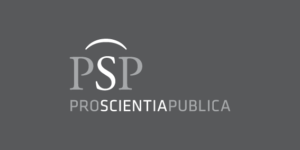Nature of Tasks when Teaching French with the Café Crème Textbook
DOI:
https://doi.org/10.15503/jecs2025.3.415.424Keywords:
Birova´s communicative curve, exercises, activities, tasks, communication, textbook, student, FrenchAbstract
Aim. The aim of the research was to find out the balance between the typology of the exercises and activities within the textbook Café-Crème.
Methods. We used the structural-tasks analysis, the theory of communicative curve and Markov chain statistical method.
Results. The textbook sequence reveals how tasks progress through different levels of communication potential, from grammar-focused exercises (State 1) to more contextual and communicative tasks (States 4, 6, and 7). The transitions provide insight into the textbook's structure and its approach to developing communication skills. Student’s Book Focus (First Dataset) offers a more balanced mix, with greater emphasis on contextual tasks (State 4) and pragmatic activities (State 6). It also incorporates more open communicative tasks (State 7), though these often revert to grammar-focused tasks. Exercise Book (Second Dataset) primarily emphasizes repetitive grammar-focused tasks (State 1), with limited but targeted transitions to higher-order tasks (States 4, 6, and 7). This book serves as a foundation, consolidating basic skills.
Conclusions. The exercise book lays a solid foundation for grammar and basic language structures (State 1), but it offers minimal direct pathways to higher-order communicative activities (States 4, 6, and 7). The student’s book complements this with more balanced task types, including contextual, pragmatic, and communicative tasks, though transitions could be improved. While the student’s book attempts to bridge foundational tasks and communicative tasks, the transitions to State 7 (open communication) remain weak across both books. This indicates a need for more explicit scaffolding towards real-world communication. Both components of the book show significant clustering within each task type (e.g., repeating grammar exercises in State 1 or grouping receptive tasks in State 4). While this reinforces specific skills, it risks reducing variety and engagement.
Downloads
References
Aby, J. (2024). Gamification in English language teaching: A pathway to fostering teacher-student rapport, teacher immediacy and students’ willingness to communicate. XLinguae, 17(4), 47-58. http://dx.doi.org/10.18355/XL.2024.17.04.04
Bírová, J. (2009). Komunikatívny cieľ v typológii učebnicových úloh a úloh na maturitnej skúške z francúzskeho jazyka [Communicative goal in the typology of textbook tasks and tasks on the final exam] [Doctoral dissertation, Comenius University]. Filozofická fakulta Univerzita Komenského v Bratislave.
Birová, J. (2010). Les réformes dans l'enseignement des langues étrangères en Slovaquie ne déforment-elles pas le but de l'apprentissage? Dialogues et Cultures: Faire Vivre les Identités Francophones, Actes du XXIIe Congrès Mondial de la FIPF, 55(2010), 67-78.
Bírová, J. (2016). Preferences for activities in French textbooks used in Slovak secondary schools analysed with Birova's Communication Curve Tool. Journal of Language and Cultural Education, 4(1), 71-85. http://dx.doi.org/10.1515/jolace-2016-0006
Birová, J., & Kráľová, Z. (2018). A tool called communicative curve applied for evaluation of similarities and differences between foreign language textbooks. European Journal of Contemporary Education, 7(1), 39–50. http://dx.doi.org/10.13187/ejced.2018.1.39
Harb, H., & El Hajj, M. (2024). Integrating eclecticism and technology in language teaching: The case of Lusail University in Qatar. XLinguae, 17(4), 3-19. http://dx.doi.org/10.18355/XL.2024.17.04.01
Kaneman-Pougatch, M., Trevisi, S., Beacco di Giura, M., & Pons, S. (1997). Café Crème 1. Hachette Livre.
Nunan, D. (1989). Designing tasks for the communicative classroom. University Press Cambridge.
Sheldon, L. (1988). Evaluating ELT textbooks and materials. ELT Journal, 42(4), 237-246. http://dx.doi.org/10.1093/elt/42.4.237
Downloads
Published
Issue
Section
License
Copyright (c) 2025 Jana Bírová, Tomáš Klinka

This work is licensed under a Creative Commons Attribution 4.0 International License.
CC-BY
Authors retain copyright and grant the journal right of first publication with the work simultaneously licensed under a Creative Commons Attribution License that allows others to share the work with an acknowledgement of the work's authorship and initial publication in this journal. All authors agree for publishing their email adresses, affiliations and short bio statements with their articles during the submission process.


